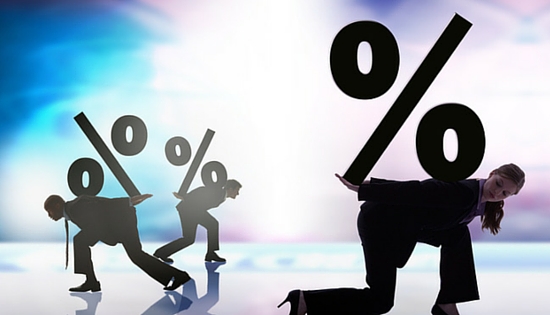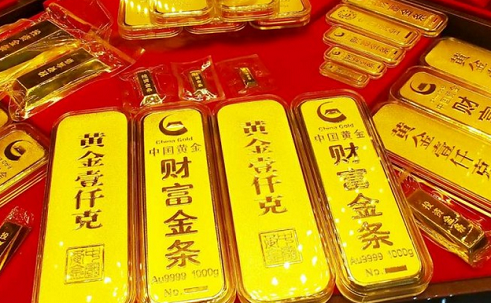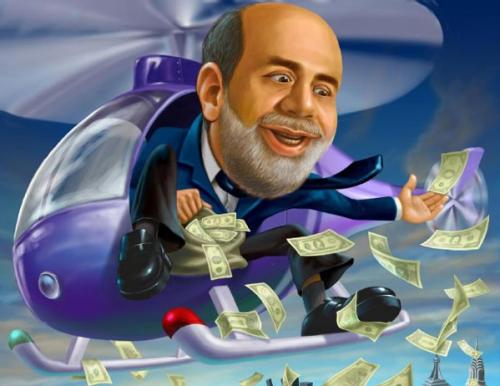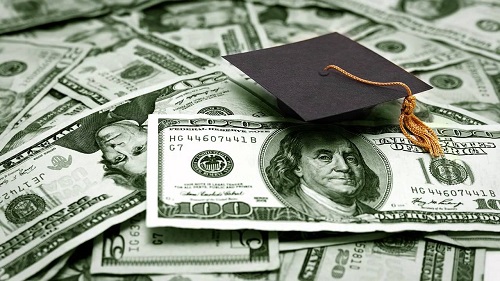As precious metals resume their long-term bull market in 2016, investors are once again asking the perennial question – should I buy ETFs or physical metals?
With the gold price on the rise, gold funds and stocks recently experienced the largest one-week inflows on record. Mainstream investors seem to prefer “paper gold” in times of uncertainty. But are these assets the right choice for your portfolio?
Or worse – could ETFs even cost you money over time?
SchiffGold now has the definitive guide to precious metals ETFs like GLD and SLV. In ETFs vs. Physical Precious Metals: Comparing GLD to Gold, we get to the bottom of the debate. This FREE white paper will teach you:
- The misunderstood costs of gold and silver ETFs.
- The potential effects of economic crises on various assets.
- Which asset offers no counterparty risk and financial privacy.
Jim Rickards has been predicting $10,000 gold. Recently, he appeared on CNBC’s Squawk Box and stuck to that prediction, saying the dynamics are in place for gold to reach that $10,000 mark.
Rickards said he thinks we are at the beginning of an extended gold bull market, possibly similar to the late 1990s when the price of the yellow metal went up 615% over a 12-year period. He conceded gold can be volatile, so he doesn’t pay as much attention to short-term fluctuations in price. But he did note an interesting fact in the wake of the recent price jumps after some major world events:
What impresses me is that gold going up immediately after the Brexit vote, or gold going up a little bit after the Turkey coup, that you can understand. Those are kind of flight to quality, fear-trade reactions. But gold didn’t go down a lot when those things were over…It’s got a very good foundation – kind of around the $1,330 level, so it seems poised to go up a lot from here.”
Many political and social upheavals this year have contributed to gold’s continued bullish run. From the Fed’s quarterly passes on rate hikes to Britain’s exit from the EU, the year’s turmoil has helped keep the yellow metal at a 25% increase for 2016.

The upcoming presidential election may prove to be one of the biggest unknowns that keep gold prices headed north. DBS Group Holdings Ltd.’s foreign exchange strategist, Benjamin Wong stated:
The market has yet to deal with the political uncertainty going into the Nov. 8 presidential election … We remain bullish and gold carries an overweight rating.”
To their credit, DBS Group Holdings Ltd. called gold’s rally this year. Last October, the fund bet on gold gaining in 2016 based on its prediction the Fed would raise rates very slowly. Recently, it’s been actively advising investors to buy during any downturns in the price of gold.
The Japanese economy is a mess.
The Chinese economy is a mess.

And the United Kingdom has been thrown into a sea of uncertainty in the wake of the Brexit vote. So what are the British people doing?
Buying gold.
According to a Reuters report, gold dealers in the UK report an extraordinary interest in gold post-Brexit – much of it from first-time buyers. The Pure Gold Company CEO Joshua Saul said British customers are pouring large portions of their wealth into the precious metal:
Earlier this year, Peter Schiff picked up on something few reported on when a former Federal Reserve president admitted the central bank created a phony wealth effect by pumping up stocks and other asset markets through its monetary policy. Several months later, analysis proved this was true, showing that 93% of the entire stock market move since 2008 was caused by Federal Reserve policy.
Today, the Fed continues to focus on propping up asset markets. Even a former Federal Reserve governor admits this is the case. Kevin Warsh appeared CNBC’s Squawk Box on Thursday and said the Fed isn’t really “data dependent” in the sense that it is looking at the overall economy. It is really market dependent.
They look to me asset price dependent more than they look data dependent. When the stock market falls like it did in the beginning of this year, they say, ‘Oh, we better not do anything.’ Stock markets are now at career highs. I suspect when they meet over the course of the next 10 days they will suggest, ‘Oh, now they look like they can be somewhat more responsible.’ I don’t like changing policy meeting to meeting based on data, or even with what the S&P 500 is doing. I like making it based on what’s happening on the real side of the economy, and that has not been very convenient over the last six to nine months.”
The Bureau of Labor released its Consumer Price Index report last Friday, which showed an increase in all consumer items by 0.2 %. The CPI measures the change in price Americans pay for all goods and services. According to the Wall Street Journal, the latest numbers indicate that the “effects of low energy prices and a strong dollar are fading.”

In short, prices are continuing to rise because of the ultra-low interest rates and quantitative easing. This is not only bad news for consumers, it’s worse news for the nation’s economy in general. That’s because the reported CPI is only a small peek into the actual effects of the Fed’s monetary policies. As Peter Schiff has said many times:
The methodology for computing the CPI has deliberately been designed to hide the effects inflation has on consumer prices.”
What’s hidden within the government-created CPI reports is the fact that most Americans are feeling the pinch. Gas price stabilization is also beginning to affect the overall increase.
Little old Chinese ladies are buying gold.

The South China Morning News (a Hong Kong paper) reported that mainland China imported five times more gold from Hong Kong in May. Recently released customs data showed imports from Hong Kong primarily grew due to cross border shipments to meet mainland customer demand.
Many of those customers are little old ladies, according to the paper:
Jasper Lo, chief executive of King International, said many mainlanders, especially ‘Big Mother’ investors – elderly ladies who like to invest in the metal – were major buyers of gold, which has risen in price by 28% this year, up 6% in the last three weeks.”
Gold traders say they expect the Chinese investors will continue to buy gold as the year goes on. According to Lo, economic volatility and uncertainty are driving gold demand on mainland China:
There has been a lot of talk about helicopter money lately.
Last May, Janus Capital’s Bill Gross said structural changes currently occurring in the US economy will ultimately lead the Federal Reserve to adopt this extreme form of monetary policy. Last week, Federal Reserve Bank of Cleveland president Loretta Mester revealed helicopter money is indeed a possibility during an interview on ABC’s AM program:
We’re always assessing tools that we could use. In the US we’ve done quantitative easing and I think that’s proven to be useful. So it’s my view that [helicopter money] would be sort of the next step if we ever found ourselves in a situation where we wanted to be more accommodative.”

Japanese officials have been seriously considering helicopter money. It now appears they won’t go all the way, but according to a Reuters report, Japan may try a “soft” form of helicopter money:
During an interview with Kitco News at FreedomFest, Peter Schiff said gold has entered a new leg of a bull market, and he expects the yellow metal to eclipse the highs reached in 2011:
I think this is a new leg of the gold bull market. I mean, gold’s been in a secular bull market since 2000…We had a cyclical bear market that I believe ended when the Fed hiked rates in December. And now we have the new leg of this bull market, which I think potentially could be an even bigger leg than the first leg, which saw gold go from sub-300 to close to 2,000. So, if this leg is bigger than that you can just imagine how high the price might go.”
Peter also reiterated his assertion that the Fed will not raise interest rates, and will in fact cut rates, most likely taking them below zero this time around. He also predicted another round of quantitative easing bigger than QE1, 2, and 3 combined.
Millions of Americans are saddled with student loan payments. And that’s just considering those who can actually repay their debt. Data released in March revealed that 46% of student loans are not currently being repaid.
But despite the squeeze student loan repayment puts on American budgets, few choose to refinance their debt at lower interest rates. A recent poll of American student debtors reported by Bloomberg reveals some interesting reasons why:

There’s no overarching reason why they don’t refinance, though 20.1% pointed to the federal loan option that ties payment amounts to what they’re earning, and they didn’t want to risk losing it. About a quarter of those who answered the poll…said they simply weren’t aware of how to refinance. And 8.4% said they planned to seek forgiveness for their loans. (A third didn’t specify why they weren’t interested in refinancing; only 2% had been rejected when they attempted to refinance.)”
It’s revealing that many with student loan debt spurn the benefits of lowering their interest rates due to government incentives. In other words, we once again have a situation where US policy is creating an unsustainable bubble. The intentions might be good, but the unintended consequences are perverse.
Late last year, a paper published by the National Bureau of Economic Research showed a large percentage of the increase in college tuition is directly related to expanding financial aid programs. This recent poll reveals yet another incentive that exacerbates the problem in the long-term.




